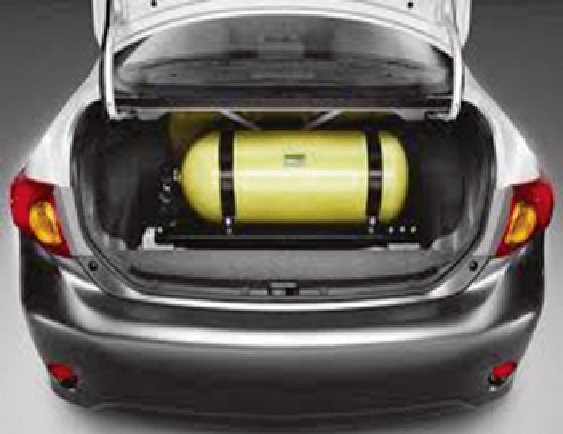Environmental Engineering Reference
In-Depth Information
Presently, the transportation sector in India, with around 1.1 million natural gas
vehicles, consumes less than 2 % of the total natural gas consumption (MPNG
2012
). It is expected that within the next decade the number of natural gas vehicles
will increase to over 5.8 million. It is also expected that the pipeline network will
increase to 15,000 km and implementation of city gas distribution networks will
cover around 150-200 cities by 2014. This would further increase the share of natu-
ral gas imports to India (Roychowdhury
2010
).
There are over 860 CNG service stations providing a blend of CNG and upgraded
biogas (bio-CNG) to over 90,000 natural gas vehicles in some developed countries
like Sweden and Germany; two of these stations only sell upgraded biogas (Power
2011
). Such development is yet to begin in India, as no commercial upgraded biogas
facilities are currently in operation.
CNG Conversion Kits
Upgraded biogas can be directly used in natural gas vehicles without any modifi ca-
tions in the engine architecture. If an existing petrol or diesel vehicle has to run on
biogas, easily-available CNG conversion kits can be installed as shown in Fig.
3
.
A CNG conversion kit is a set of components and tools that are installed in a
vehicle so that it can operate using both petrol and CNG. These usually include
parts such as regulator, high pressure tubing and fi ttings, pressure gauge, fi lling
nozzle, hoses, hose clamps, closed loop fi tting system, emulator, timing advance
processor, fuel change over switch as well as the necessary wiring, straps and screws
Fig. 3
Car with CNG conversion kit (
Source
:
http://naturalgasconversion.net/
)

Search WWH ::

Custom Search